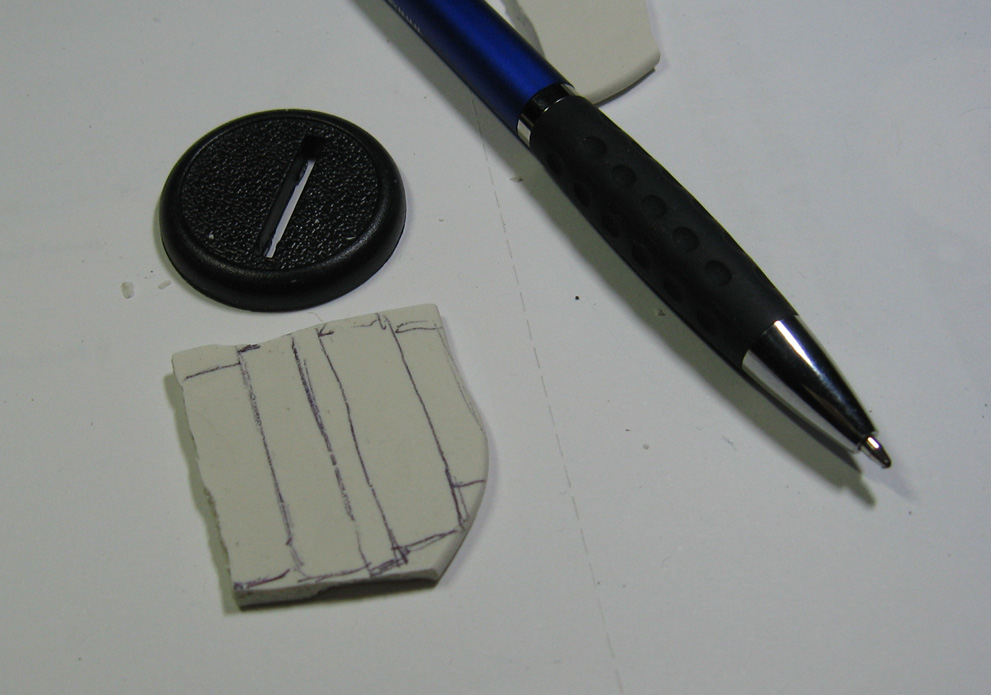Let's continue with our pirate theme bases!
If you are going to do an entire unit or army in this style of basing, it is always a good idea to get as much variety in your bases as possible. Of course, some of this will be determined by the "footprint" of each figure, but this post shows a few variations on the original bases.
This is a more oblong shape than the base you saw in edpisode 1.
The cuts around the edges of the boards was a little more severe than the first base, so I had to be careful when cutting into the sculpey not to go too deep too fast, and crack it.
As before, the planks were carved with the wedge tool. Keep in mind that you can have a much more shallow texture by using the very sharp scoring tool that I showed you in the previous post!
When you are making larger bases, such as this 40mm, don't make the same mistake I did in the past and make the planks bigger! Yes... remember to keep them the same size as those on your smaller base, and just include more of them!
This is another unusual shape for a 30mm base. It is designed for a figure that has a wider footprint.
This collection of 30mm and one 40mm base gives you a decent idea of how you can create a nice variety of shapes.
Sometimes I like to add another plank over the top for interest. However, always keep in mind that you better leave a place for the figure to stand! Of course, you could always place a couple of planks on the base and have a figure who is running (up on one foot) perched on top of the wood pile.
This works pretty nicely. When it's painted, the top board will be a different shade, and that will make it stand out a little more.
The 50mm base could have many different options, such as a rope coil, cannon balls, and so on. I will just create a nice set of planks first.
Voila! A nice set of bases, all ready for extra touches! The next post will show how I like to make masts for the pirate bases, so stay tuned!























